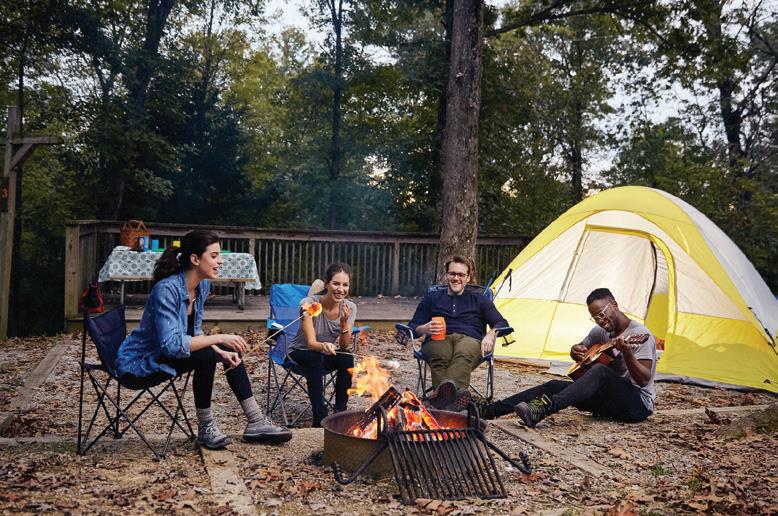
11 minute read
KENTUCKIANA
Pete Dye Golf Trail’s Indy pit stops will amaze
Brickyard Crossing • Indianapolis, Ind.
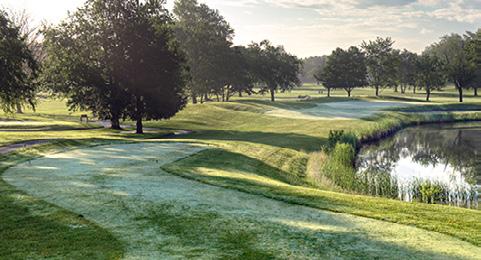
Maple Creek Country Club • Indianapolis, Ind. The Fort • Indianapolis, Ind.
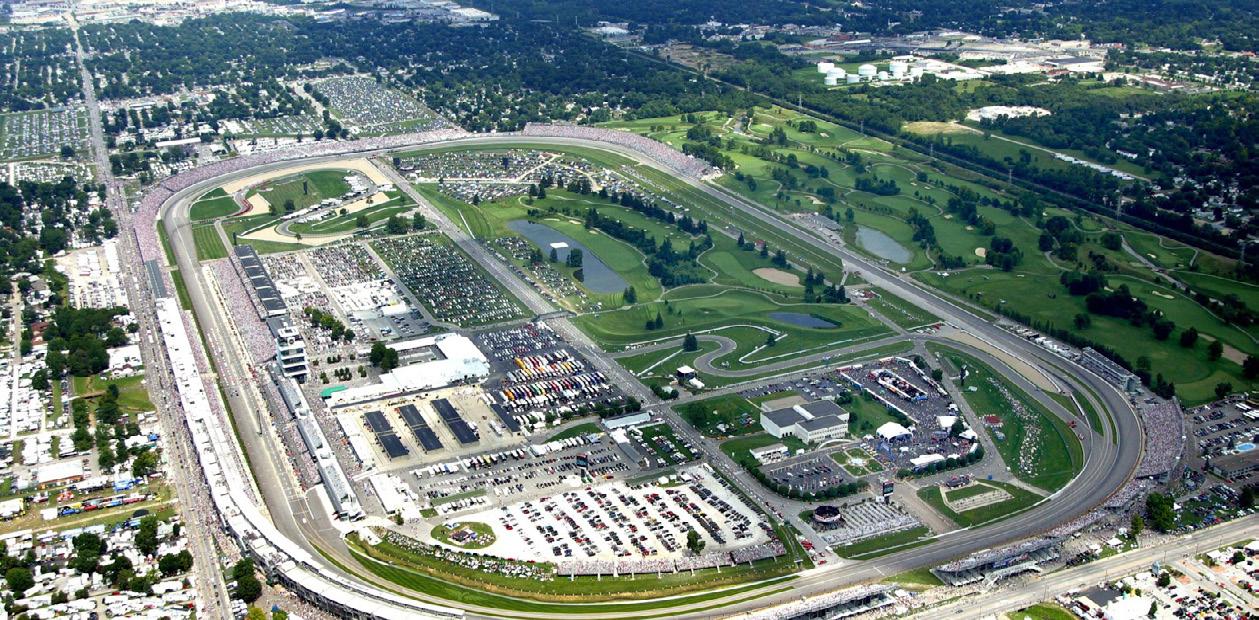
The Fort, Brickyard Crossing and Maple Creek feature speed, rolling landscapes and Army history or many years, golfers have been coming to The Hoosier State to enjoy the scenic views and challenging courses designed by master ar-F The Dye’s maiden voyage — Maple Creek Country Club The Dyes designed their very first 18-hole course in 1961 when they chitect, Indiana’s own Pete Dye. Along with his wife Alice, Dye created a unveiled Maple Creek Country Club — located near downtown Indianapogolf course design legacy that is world-renowned and put Indiana on the lis. They incorporated the mature trees and long grasses native to Indiana global golfing map — highlighted by a collection of seven Dye designs with narrow fairways and a copious amount of bunkers into this historic deknown as the Pete Dye Golf Trail. Offering a variety of inviting layouts and sign to create a natural oasis in an urban setting. Maple Creek’s clubhouse challenges, the Trail is truly for golfers of all skill levels — each featuring features an expansive museum of Dye memorabilia that boasts the only Dye’s signature design style and ingenuity. complete logoed golf ball collection of every Pete Dye-designed course.
Start your engines — Brickyard Crossing
Perhaps the most unusual Pete Dye course is woven into one of the sporting world’s largest and ‘fastest’ venues at the Indianapolis Motor Speedway. With Brickyard Crossing, Dye designed four holes inside the iconic IMS back straightaway where drivers top 230 miles per hour at the Indy 500 each May. The remaining 14 holes are located behind the racetrack’s backstretch.
At the time Dye was redesigning the course, the old concrete racetrack walls were being pulled down and replaced. Dye salvaged the walls and used them around the holes and creek as an homage to the incredible legacy there. Visitors can even see the names of drivers along the walls melding golf and the racing heroes that wrote history there. The pilgrimage to Brickyard Crossing is well worth it for any sports aficionado. History at every turn — The Fort
Just outside of Indianapolis is The Fort Golf Resort. The course is situated on the grounds of the former U.S. Army post, Fort Benjamin Harrison. The neighboring Fort Harrison State Park offers a serene backdrop for the greens with views of the now landmark Army installation. The Fort accentuates the unusually hilly Indianapolis terrain located there, which lends to the flowing design. For those that play The Fort, this rolling parkland layout gives golfers a welcome sense of peace and tranquility.
Four more unique courses in Indiana round out Indiana’s Pete Dye Golf Trail. If you complete all of them, you can receive a free Pete Dye Golf Trail pin flag — and bragging rights for life. The legacy of Pete Dye welcomes you to Indiana’s premier golf experience. Visit PeteDyeGolfTrail.com to plan your trip and book tee times.

Dye's Indiana Magnum Opus
French Lick Pete Dye • French Lick, Ind.

French Lick is ‘iconic’ says the great Scot, Monty
BY BOB SHERWIN
hen the Pete Dye Course at French Lick is described as ‘futuristic,’ W that doesn’t mean it features hologram hazards, polygon greens or avatar caddies. It means, rather, that it is built for whatever challenges or trends the next generation of golfers may present. With everimproving equipment and emphasis on more muscle and enhanced swing speed, the current mania is distance-obsessed golfers pushing many of the nation’s once-illustrious layouts into obsolescence.
Legendary course architect Pete Dye was ahead of the game when he accepted the challenge of designing the French Lick course in southern Indiana. When it opened in 2009 — immediately taking its place among America’s top 100 courses — he created built-in defenses to prevent any unforeseen subjugation. Dye, the Hall of Fame designer who built more than 250 courses worldwide before he died a year ago in January at the age of 94, put a premium on length (8,100 yards) but, more importantly, on precision. He designed narrow fairway landing areas — some as tight as 25 yards; small greens — some just 5,000 square feet; and plenty of hazards, deep rough, steep drop-offs, and ample waste areas. Swing away, at your possible peril.
“We’d like to see (distance maven) Bryson DeChambeau play here,’’ says Dave Harner, Director of Golf Operations at the French Lick Resort. “Mr. Dye wanted to build a futuristic course, and placed a premium on shot-making. Accuracy off the tee is important. It’s a unique course.”
What makes it unique is the location — situated on a high plateau, one of the highest points in Indiana. It plays as high as 950 feet above sea level. The elevation allowed Dye to branch away from his usual design. Virtually all the trees down to the 700-foot level were removed. Narrow ribbons of green were laid out adjacent to steep drop-offs, some as deep at 100 feet. Dye, and wife Alice — an able course designer herself, installed features consistent with his other courses, such as a large variety of bunker types — mini, long, shallow and deep, double doglegs, and visional uncertainty as golfers ponder their approach shots. What’s missing, however, is perhaps what Dye is most famous for — railroad ties.
Dye’s most famous hole is surely the ‘island green’ 17th at TPC Sawgrass. That course has an abundance of railroad ties and wood planks in both the water and bunkers. Dye recognized that French Lick has its own characteristics, however, and adapted his design to the terrain. With 40-mile views and mist drifting over the ridges, “every day you have a different view,’’ Harner says. “It sometimes looks like the ocean out there.’’
The course is the jewel in Indiana’s Pete Dye Trail, which includes Ackerman-Allen, Brickyard Crossing, The Kampen Course, Maple Creek Golf and Country Club, The Fort Golf Resort and Tippecanoe Country Club. Many of the game’s finest players have discovered the course, now ranked 38th among resort courses in the country. It hosted the 2015 Senior PGA Championship, won by Scotland’s Colin Montgomerie who called French Lick one of America’s ‘iconic courses’ adding that golfers all over the world will want to play it.
Indeed, many have placed the course on their bucket list. “Golfers going from Pine Valley to Whistling Straits are landing their private jets here as well,” says Harner. That makes this place truly a bucket list destination.
PETE DYE GOLF TRAIL
petedyegolftrail.com
The Pete Dye Course at French Lick French Lick, Ind. • (888) 936-9360 Five sets of tees to 8,104 yards frenchlick.com
Ackerman-Allen Course West Lafayette, Ind. • (765) 494-3139 Five sets of tees to 7,500 yards purduegolf.com/ackerman-allen-course-tour
Brickyard Crossing Indianapolis, Ind. • (317) 241-2500 Five sets of tees to 7,180 yards brickyardcrossing.com
The Kampen Course West Lafayette, Ind. • (765) 494-3139 Five sets of tees to 7,465 yards purduegolf.com/kampen-course
Maple Creek Golf and Country Club Indianapolis, Ind. • (317) 894-3343 Four sets of tees to 6,633 yards maplecreekgc.com
The Fort Golf Resort Indianapolis, Ind. • (317) 543-9597 Five sets of tees to 7,145 yards thefortgolfcourse.com
Tippecanoe Country Club Monticello, Ind. • (574) 583-9977 Four sets of tees to 6,800 yards tippecanoecc.com
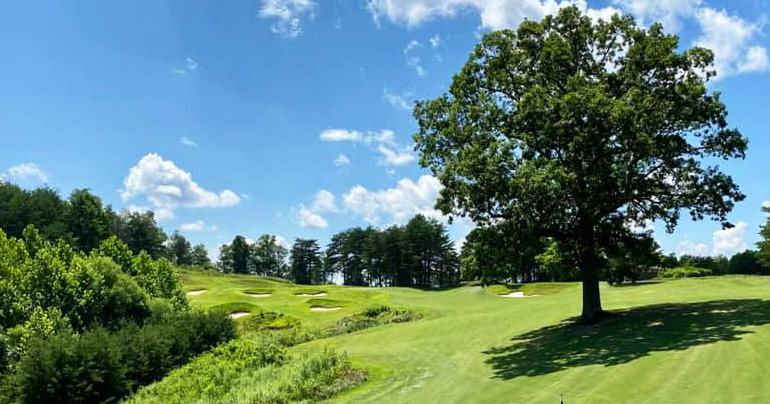
Signature experience awaits in the Bluegrass State at Yatesville
CENTRAL Barren River Lake • Dale Hollow Lake Lincoln Homestead My Old Kentucky Home
EAST General Burnside Island • Grayson Lake Pine Mountain • Yatesville Lake
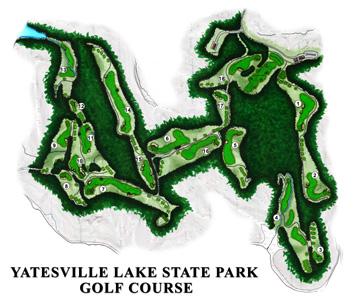
It’s the sort of review that would make any architect smile. In 2006, three years after the Arthur Hills-designed course had opened,
‘Gregorie’ wrote on TripAdvisor.com that Eagle
Ridge Golf Course at Yatesville Lake State Park had “14 or 15 signature holes”. That wasn’t all he (or she?) said though. Actually, Gregorie could barely contain himself, writing over 750 words in which he gushed about the course being in his top three in the country, that it might be the best value in America, and that the views, especially on the front nine, were “just untouchable.”
“Words like that are obviously very heartening,” says Steve Forrest, Hills’s associate who played a big role in incorporating the site’s amazing topography into the final design. “I only came across it recently. It was probably the most satisfying review I’ve ever read.”
Part of a remarkable network of public courses located within Kentucky’s celebrated state parks,
Eagle Ridge is located the far east of the Bluegrass
State, about five miles west of the small town of
Louisa. It cuts through some deep forest while negotiating significant elevation changes — none greater than at the extraordinary short par 4 13th.
With a pulse-quickening 200 foot drop from the tee, the 315-yard hole feels almost as deep as it is long.
Combining the ridge at the 13th with the course’s other sizeable features presented Hills and Forrest with a number of tough questions. “It was a very complex problem,” Forrest remembers. “The State was building its really excellent golf trail and using a number of different designers. They gave us the toughest site, saying we could handle it the best. I didn’t know if I should take that as a compliment or be upset because of the scale of the task they’d given us.”
The site, Forrest adds, wasn’t ‘hilly’ it was ‘mountainous’. “But, fortunately, there was just enough length of ridgeline to string out 18 holes.” You probably need to be there or at least see the topographical map to fully understand what Forrest is saying but, really, only architects with incredible vision, skill, experience and audacity could have made any sort of course at all at Yatesville, much less one as good as this. It’s likely, in fact, some designers would have taken a pass saying the terrain was just too severe in places. Hills, though, saw it as an opportunity for some exciting golf. “It doesn’t get much more dramatic than this,” he said in his 2004 book ‘The Works of Art’. “People will be taking about the tee shot at 13 over and over again. Dramatic is the key word here.” He then paused, before adding ”…and playable”.
Golfers know how important a word that is. It’s all very well having spectacular, thrilling ground and stunning vistas at every turn, but if the course throws up a non-stop series of extravagant, exaggerated shots it soon turns goofy. Hills and Forrest certainly took advantage of the extreme land but skillfully managed to keep it in check. Make no bones though, Eagle Ridge is a thrill ride.
Forrest was justly proud of the team’s efforts. “We were absolutely delighted with the end result,” he says. “First, that we found a golf course in the wilderness, and second that Golf Digest rated it third best affordable new course in the country.”
Beginning her 12th season as head professional at the course is Missy Kennedy who has also been Yatesville’s park manager for the last six years. Kennedy describes Eagle Ridge as a ‘very cool layout’ and adds that, besides the 13th, the hole that gets the most attention is the 582-yard 4th which features three strips of fairway — the third about 60 feet below the level of the second — a creek crossing the fairway then meandering off to the right of the green, a steep bank bordering the last 100 yards to the left, and an area of exposed rock just short of the green (Forrest says he and Hills were going to locate the green where the rock was positioned but decided to keep it and elevate the putting surface.)
Any course that boasts holes like the 4th and 13th is worthy of attention, but perhaps even more astonishing than any of its holes is how few rounds Eagle Ridge records every year. Put a course like this within 50, even 100, miles of a good-sized city and the tee sheet would be full from dawn till dusk every day. The nearest significant population, however, is 145 miles away in Lexington. Louisville is another 80 miles further west. It explains why Eagle Ridge records just 7,000 rounds a year. “We are in a very small town in the most eastern part of Kentucky,” says Kennedy. “The most we have done in my 11 years here is close to 8,000, but on average we get 7,000-7,500. Most of our play comes from destination golfers.”
Well, this is Destination Golfer magazine. So what are you waiting for? Clearly, Eagle Ridge at Yatesville State Park in Kentucky is a destination you need to visit.
Yatesville is one of just 13 fantastic venues (and 16 courses) on the Kentucky State Parks Golf Trail. Visit the web site to find golf information, package deals, discounts and offers, and to book tee times — parks.ky.gov/golf.

